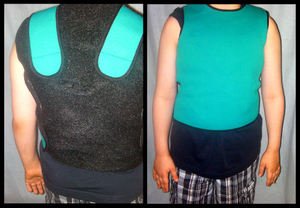Sensory integration is our ability to process all the inputs coming from our various senses and – well, make sense of them.
Sensory integration disorder is a neurological condition that is characterized by the inability to deal with all that sensory information. People with the disorder may only be able to cope with input from one or two senses at a time. They tend to become easily irritated or confused, and simply cannot cope with ordinary daily experiences. The disorder can manifest in a number of ways, for example uncontrollable tantrums, very limited eating preferences, or unusual discomfort when wearing certain types of clothing.
Sensory integration disorder (SID) can cause a person to avoid or seek certain stimuli – or sometimes both in alternation. An inability to process sensory data can involve one or more senses, including the so-called “near senses” – tactile, vestibular and proprioceptive – that most of us take for granted.
Sensory integration disorder can occur alone, but it is not uncommon for a person to have both SID and autism. It can also occur in combination with such conditions as cerebral palsy or ADHD. The disorder should be diagnosed by an occupational therapist.
The deep pressure vest – a bear hug for sensory integration
A deep pressure vest is a tight-fitting garment worn over a t-shirt. It is usually comprised of a front and a back piece, fitted together with Velcro closures. As the name suggests, the vest provides deep pressure that stimulates the tactile and proprioceptive senses.
A deep pressure vest helps a person with sensory integration disorder to feel where his body is in space, and tends to have a calming effect that can improve concentration and focus. People who are asked how the vest works often say wearing one feels like getting a bear hug. The vest is worn as one part of a “sensory diet” to address the individual’s specific therapeutic needs.
Deep pressure vest vs Weighted vest
The deep pressure vest has several benefits over the weighted vests that were developed earlier. With any weighted product, the pressure applied is mainly due to gravity’s pull on the weights. The therapeutic benefit can be observed after as little as 20 minutes – but if worn too long, the nervous systems adapts to the added weight. Occupational therapists call this accommodation. There is a wearing schedule to follow in order to prevent accommodation, and parents or therapists have to be careful not to use too much or too little weight.
By contrast, deep pressure vests are made of the same fabric as wet suits and they are designed to fit tightly. The vest gently squeezes the person wearing it, creating the characteristic bear hug sensation. Pressure is distributed more evenly than with a weighted vest. It is also redistributed from one part of the vest to another, as the wearer moves around. As a result the vest can be worn all day without worrying about accommodation. Our son has worn a deep pressure vest for several years. He is quite comfortable wearing it from morning to night, and can keep it on even when he is playing sports.
Deep pressure vests are easy to shop for: just choose a vendor and find the right size, and you’re done! They are affordable, require no extra pieces unlike some weighted products, and they are machine washable. Weighted vests, on the other hand, are more difficult to select. Some models are more expensive because the weights are sold separately. Other models can use integrated weights made from materials that cannot be washed.
Variations on the deep pressure vest
There are some pressure vests that also have weights built into them, or that incorporate pockets for removable weights. This combination of weights and deep pressure is apparently helpful for some people, but the vest (or just the weights) would have to be removed periodically to maintain the therapeutic effect.
A newer variant on the deep pressure vest was developed at University of Massachusetts Amherst. It can be incorporated into any jacket or vest with a lining. Because the vest doesn’t show, wearers can feel confident that no one else knows they are using it. They can meet school or work dress codes without needing to ask for a medical exemption, and those sharp dressers who might not normally want to wear a pressure vest can benefit from the therapeutic effects without sacrificing style. They can simply change the vest from one jacket to another, to suit their outfits!
Sources:
Jenny Clark Brack, OTR/L”Questions from educators.” Jenny’s SPD Connection
Susan Dodd, “Understanding autism.” Google Books
New deep pressure vest for children with autism, sensory integration problems.” iHealthBulletin
Sensory integration / Occupational therapy.” Bright Tots



